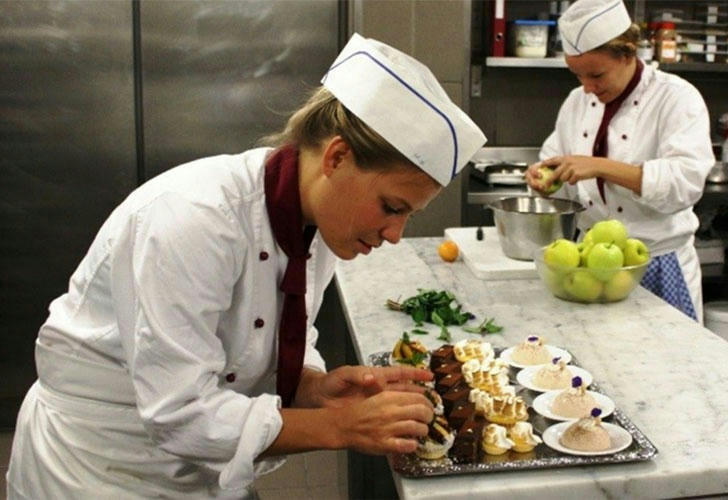Kickstart Your Culinary Journey in 2025! TOP online Culinary arts course
Are you eager to transform your home kitchen into a hub of delicious creativity? Online culinary arts courses make that dream a reality—no matter where you live, you can learn professional techniques, explore global cuisines, and build confidence one recipe at a time. In this article, we’ll highlight the top programs to consider for 2025 and share the essential tools that will make every virtual lesson smooth, fun, and effective.

1. Top Online Culinary Arts Courses for 2025
Choosing the right course sets the foundation for your success. Here are a few standout options—each offering a different style, pace, and focus:
a. Professional Certification Programs
Designed for aspiring chefs who want a credential, these multi‑month programs cover fundamental techniques (knife cuts, sauces, baking) as well as menu planning, plating, and kitchen management. Look for courses with live video demos, instructor feedback, and digital portfolios.
b. Short‑Form Skill Workshops
Perfect for busy diners, these bite‑sized classes teach specific skills—like mastering risotto, perfecting French macarons, or learning sushi rolling. You can jump in for a weekend, practice at your own pace, and revisit lessons anytime.
c. Global Cuisine Series
Travel the world from your countertop. Courses focusing on Italian, Thai, Mexican, or Middle Eastern cooking guide you through authentic recipes, traditional ingredients, and cultural context. Expect shopping lists, ingredient substitutions, and regional history woven into each lesson.
d. Specialty Diet Bootcamps
Gluten‑free baking, plant‑based comfort foods, or keto desserts—specialized programs cater to dietary needs and modern lifestyles. Chefs share substitution tips, kitchen hacks, and flavor balancing to keep your meals both nutritious and delicious.
e. Live Virtual Workshops
Nothing beats real‑time interaction. Instructors demonstrate techniques live, answer questions on the spot, and critique student submissions. Look for courses offering small group sizes and opportunities to network with fellow home cooks.
Each format has its perks—professional programs build depth, workshops offer flexibility, and live classes add accountability. Think about your goals: Are you aiming for a career shift, or simply leveling up your weekday dinners?
2. Essential Kitchen Tools for Your Virtual Classroom
No matter which course you choose, having the right tools makes learning a breeze. Here’s a curated list of versatile equipment you’ll use again and again:
Chef’s Knife & Knife Sharpener
A well‑balanced, sharp 8–10 inch chef’s knife is indispensable. It handles vegetables, meats, and herbs with ease. Pair it with a whetstone or pull‑through sharpener to maintain a razor edge.
Digital Kitchen Scale
Precision matters, especially in baking. A scale that measures in grams and ounces ensures consistent results when you’re following recipes or dividing dough.
Sturdy Cutting Board
Choose a board that’s gentle on knife edges—wood or high‑quality plastic work best. Non‑slip feet keep it stable, and generous size gives you room to prep multiple ingredients.
Mixing Bowls Set
Stainless steel or glass bowls in various sizes let you whisk, marinate, and hold prepped ingredients without flipping your mise en place into chaos.
Nonstick & Cast‑Iron Skillets
A nonstick pan is perfect for delicate work (eggs, pancakes), while a cast‑iron skillet sears steaks, bakes cornbread, and goes from stovetop to oven without missing a beat.
Immersion Blender
From pureeing soups to blending sauces right in the pot, an immersion blender reduces cleanup and speeds up prep.
Digital Instant‑Read Thermometer
No more guessing—insert the probe into proteins to hit the perfect medium‑rare temperature or ensure poultry is safely cooked.
Silicone Spatulas & Whisks
Flexible, heat‑resistant spatulas scrape batter and sauces clean, while a sturdy whisk aerates and incorporates ingredients smoothly.
Baking Sheets & Silicone Mats
Heavy‑duty baking sheets paired with reusable silicone mats yield even browning and easy cleanup for cookies, roasted veggies, and more.
With these basics, you’ll tackle every lesson like a pro—from chopping and sautéing to baking and plating.
3. Mastering Key Techniques Online
Online courses often break down complex skills into manageable modules. Here are some of the most valuable techniques you’ll encounter—and practice:
Knife Skills
Learning to dice onions without tears, chiffonade basil, and brunoise carrots sets the stage for efficiency and safety.
Practice the claw grip and rocking motion until they become second nature.
Sauce Fundamentals
Master a mother sauce (béchamel, velouté, espagnole) and learn to transform it into dozens of derivatives—mornay, velouté with mushrooms, or peppercorn sauce for steaks.
Baking Basics
From measuring flour correctly (spoon and level) to proofing yeast doughs, a baking module teaches precision and patience.
Recipes like focaccia, scones, or muffins build your confidence before tackling croissants.
Plating & Presentation
A touch of microgreens, a swipe of sauce, and a sprinkle of spice can elevate a dish from homey to restaurant‑worthy.
Courses show you how to balance color, texture, and height on the plate.
Global Spices & Seasoning
Understanding how spices interact brings depth to curries, rubs, and marinades.
Taste tests and smell exercises help you train your nose and palate.
Time Management
A module on multitasking (e.g., simmer sauce while chopping veggies and preheating the oven) helps you coordinate complex recipes without stress.
By focusing on these pillars, every recipe becomes an opportunity to refine your skills and develop your unique cooking style.
Conclusion
An online culinary arts course is your ticket to a world of flavor and technique—no travel or expensive equipment required. Armed with the right program and essential tools, you’ll progress from following recipes to creating your own dishes and delighting friends and family. So, sign up for your favorite course, stock your kitchen with the gadgets above, and get ready to cook up a storm in 2025. Your culinary journey starts now—bon appétit!
